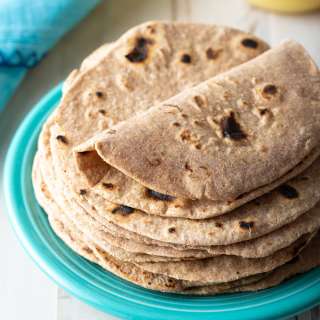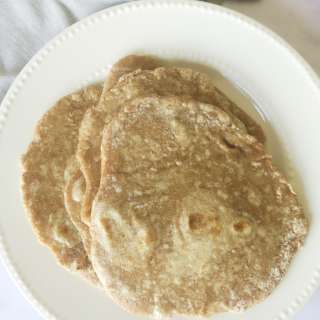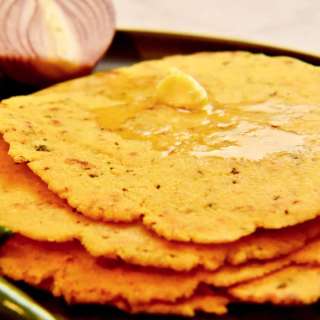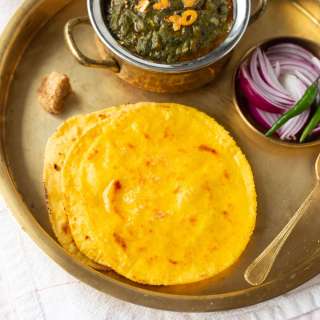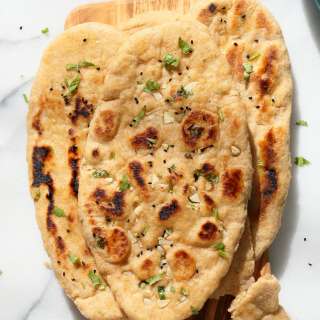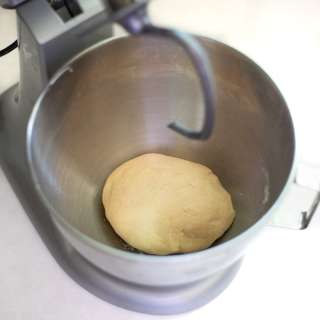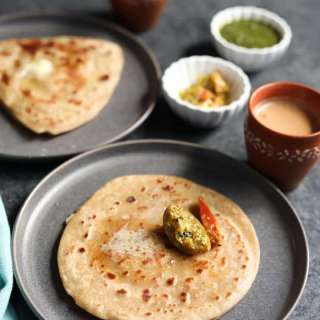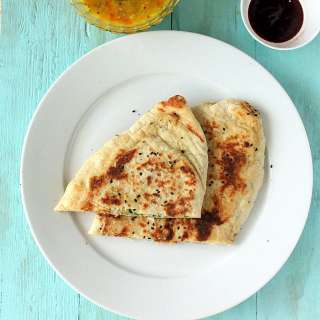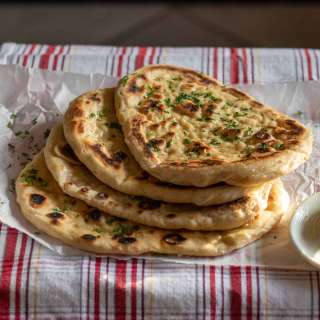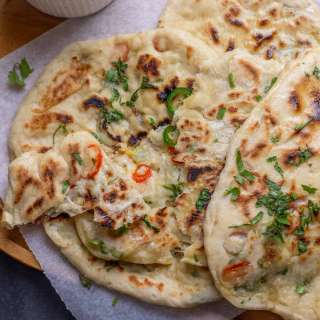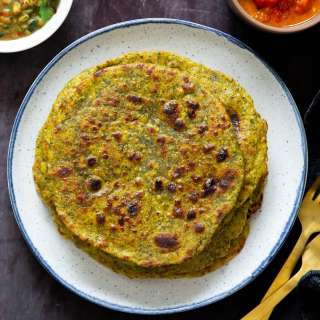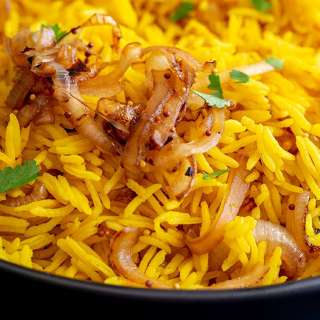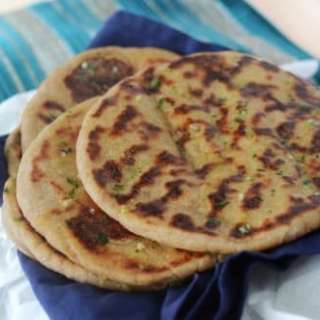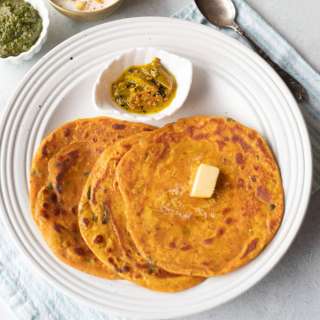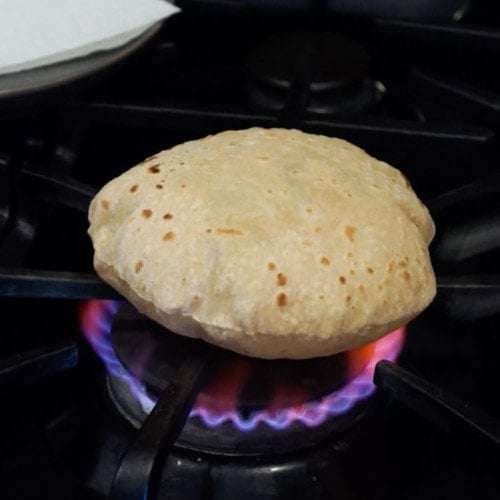
How To Make Soft Roti / Chapati? (Whole Wheat Indian Flatbread Recipe)
User Reviews
4.9
168 reviews
Excellent

How To Make Soft Roti / Chapati? (Whole Wheat Indian Flatbread Recipe)
Report
Roti, also known as Chapati or Phulka, is a staple in most Indian homes. This whole wheat Indian flatbread is typically enjoyed as a side with curries or lentils.
Share:
Ingredients
- 2 cups whole wheat flour
- 3/4-1 cup water
- 1 teaspoon oil (optional)
- 1/4 cup whole wheat flour to roll roti
- ghee to spread on cooked roti (optional)
Instructions
Make Roti Dough
- In a large bowl or flat plate with high edges, take the whole wheat flour. Slowly start adding water and mix with hand. Don’t add all water at once. Keep adding water as needed, while mixing.
- Once the dough starts to form, do not add more water. It takes a little more than 3/4 cup of water to make the dough. The amount of water will vary depending on the brand of whole wheat flour.
- Make the dough smooth by kneading it with your fist. Add some water to your hand and knead 2-3 times. When you press your finger against the dough, it should leave an impression. This is the right consistency of the dough.
- Cover with a damp cloth or plastic wrap and let the dough rest for at least 15 mins and up to 30 mins. This helps gluten to release and the dough becomes more elastic. Open and knead once again.
- You can apply some oil to make the dough edges less sticky. but this is not necessary to get soft rotis.
Roll Roti
- Keep the rolling board and rolling pin ready. Keep a bowl of dry flour and a bowl of ghee to apply on the roti once it is ready. You want to roll and cook the roti’s at the same time, so the rolled dough does not become dry.
- Make small balls from the dough by rotating between your palms. Make the ball a bit flat. Dip a ball in dry flour, place on the marble or wooden base (chalka) and roll with the rolling pin.
- Do not apply too much pressure while rolling. Apply equal pressure on all sides while rolling. When you roll with gentle hands, the dough flattens and moves in circles with the rolling pin. You can also turn the roti with your hands at 90 degrees multiple times while rolling, so that it forms a circle. Apply dry dough about half way through on both sides and roll again.
Cooking phulka
- Preheat a Tawa (griddle) on medium-high flame. Pick the roti and flip between both both palms to remove any extra dry flour. Transfer roti on the tawa.
- Turn when the color starts changing and small air pockets form in about 5-10 seconds. For the other side, now we want to cook until there are some brown spots on the roti.
- Now you can cook directly on flame. Use tongs (chimta) to turn from side to side until the roti puffs.
Cooking roti / chapati
- If you don’t have a flame or are doing induction cooking. Follow phulka steps as above. Then turn the roti on tawa and cook until there are brown spots on the other side too. Press gently with a flat spatula, which will help the roti to fluff up. Turn couple of times while cooking and pressing gently.
- Take the phulka / roti / chapati and place on a paper towel (or a thin cloth) on a plate and apply ghee. Repeat process of rolling and cooking for rest of the dough.
- Enjoy roti / phulka warm with any curry, dal or vegetables.
Equipments used:
Notes
- Vegan Variation: Simply replace the ghee applied at the end with oil or vegan butter.
- Best flour for roti: I prefer Sujata Chakki Atta or Aashirvaad Select Sharbati Atta or Aashirvaad Whole Wheat Atta.
- Possible issues with roti dough
- Tips to make soft roti
- Vegan Variation: Simply skip the ghee or replace with oil.
- How to store roti and dough?
- How to reheat roti?
- How to pack roti for lunch in a box?
- If the dough gets too sticky, it means more water got added. Add a tablespoon of flour at a time and knead again till all the flour is absorbed.
- If the dough gets too hard, it means less water was added. Add a tablespoon of water at a time and knead again. The dough should be soft enough that if you press your finger against the dough, it leaves an impression.
- Knead the dough well, it should be not too hard and not too soft/sticky.
- Let the dough rest covered with a damp cloth for 15-30 minutes, so the gluten is released and it becomes more pliable.
- Roll the dough with soft hands, applying equal pressure on all sides.
- Apply ghee or oil to keep the rotis soft for longer.
- When learning to make roti, you might need to use more dry flour. But always dust off any excess flour before cooking on the Tawa, otherwise the dry flour can make the roti dry and hard. As you get experienced, only apply dough once and roll the roti.
- Making roti needs lots of practice. So be patient and keep practicing.
- Storing Dough: Refrigerate in air-tight container and use within 1-2 days. After about 2 days, the dough color starts to become brownish on the outside. To make roti, get the dough to room temperature before using (else it might seem harder to roll)
- Storing Roti: Cooked roti can be refrigerated for 2-3 days. They might stick together due to the ghee. So let them come to room temperature or let heat to separate them. You can also store in freezer for longer shelf life. Place parchment paper between roti’s and then place them in a freezer bag like Ziploc.
- Microwave: Keep on a paper towel and heat for 5-10 seconds.
- Stovetop Tawa: Heat each side until the roti is soft again. Apply some ghee to make it fresher tasting.
- Do not pack hot off the griddle roti in a closed box. It will get soggy. Place the cooked roti on a paper towel, apply ghee. Let it cool a little (not completely). Then pack in an aluminum foil along with the paper towel.
Nutrition Information
Show Details
Calories
79kcal
(4%)
Carbohydrates
16g
(5%)
Protein
2g
(4%)
Sodium
1mg
(0%)
Potassium
81mg
(2%)
Fiber
2g
(8%)
Calcium
8mg
(1%)
Iron
0.8mg
(4%)
Nutrition Facts
Serving: 12roti's
Amount Per Serving
Calories 79 kcal
% Daily Value*
| Calories | 79kcal | 4% |
| Carbohydrates | 16g | 5% |
| Protein | 2g | 4% |
| Sodium | 1mg | 0% |
| Potassium | 81mg | 2% |
| Fiber | 2g | 8% |
| Calcium | 8mg | 1% |
| Iron | 0.8mg | 4% |
* Percent Daily Values are based on a 2,000 calorie diet.
Genuine Reviews
User Reviews
Overall Rating
4.9
168 reviews
Excellent
Other Recipes
You'll Also Love
Vegan Naan Recipe - Plain, Garlic or Avocado Naan bread. Dairy-free Indian flatbread
Indian
5.0
(51 reviews)

